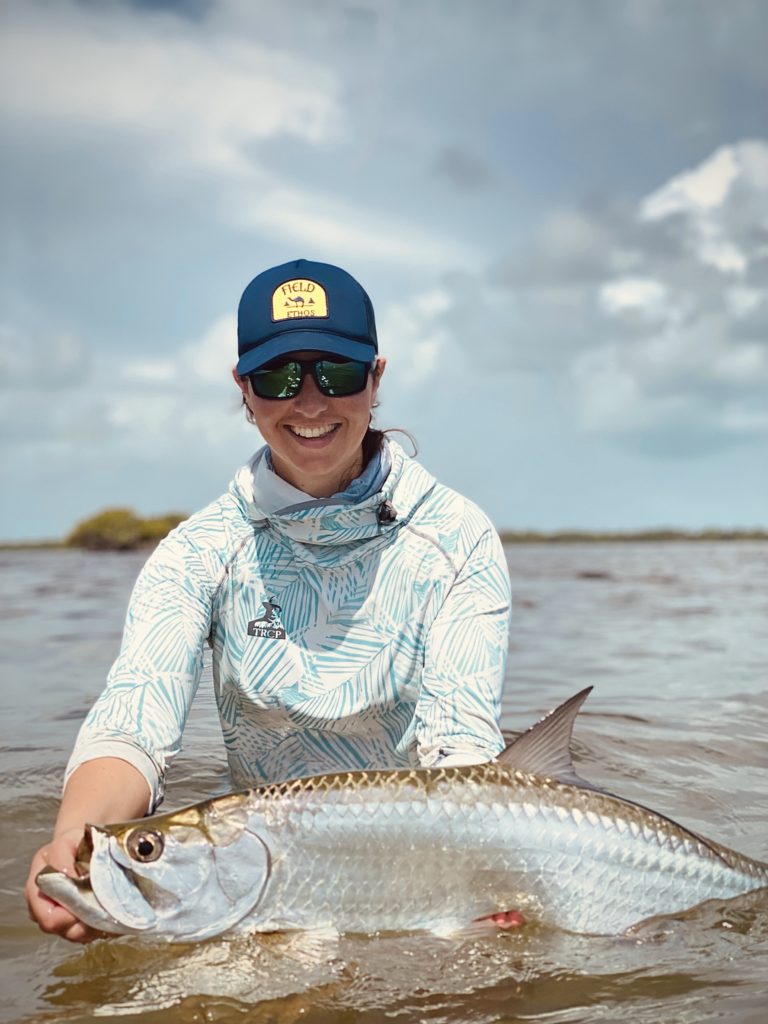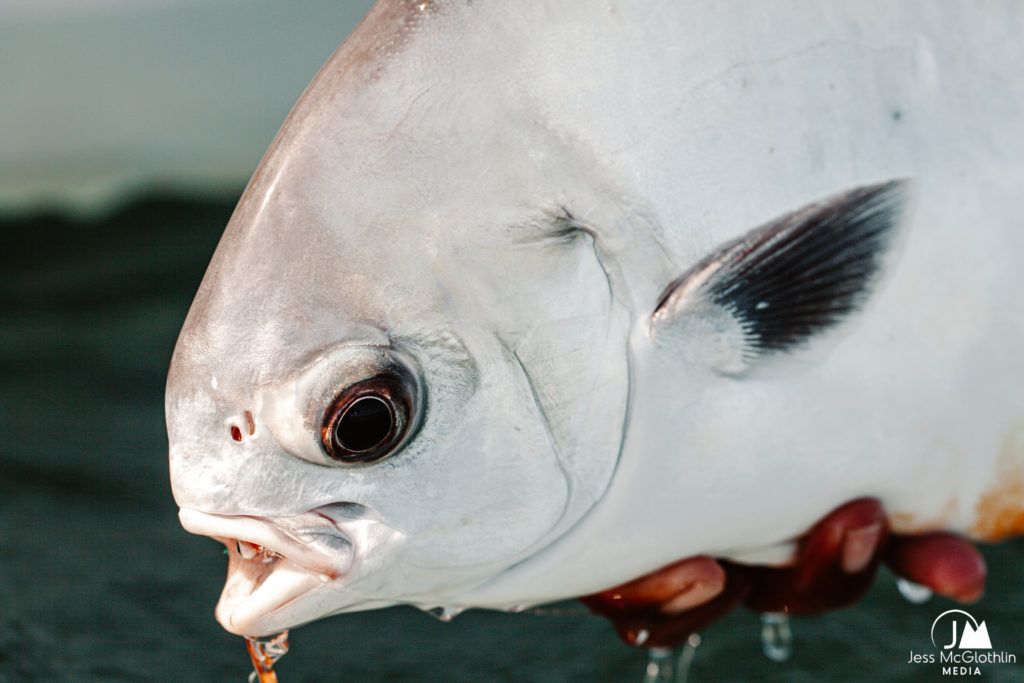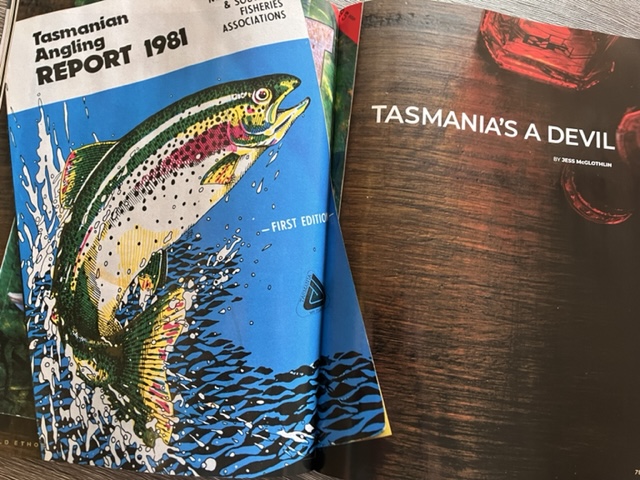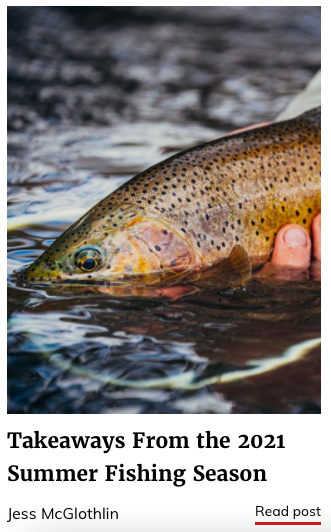
Sometimes, on rare, special occasions, the photographer gets to fish. And it’s a wonderful thing.
Last week in Belize I got to sneak out from behind the camera.
Image: courtesy of Robert Wells.
Updates on travels, adventures and news from Jess McGlothlin Media.

Sometimes, on rare, special occasions, the photographer gets to fish. And it’s a wonderful thing.
Last week in Belize I got to sneak out from behind the camera.
Image: courtesy of Robert Wells.
As a general rule, anglers are passionate folks. Often our identity rolls right up into our passion for fishing… it becomes a core part of our being. But I’ve found that passion often doesn’t correlate directly into a willingness to put into the work. Spending more time working at saltwater lodges over the past years, I’ve been curious to see a lot of people showing up to their “trip of a lifetime” with no idea of what lies ahead.
There’s something to be said for the unexpected. But it also pays to do a little bit of research before hopping on a plane and flying to another country to fish (or to do anything, really). And I’d argue that if you’re spending a good bit of change on a trip, taking up a guide’s time, and just generally want to have a decent time on the water, a bit of preparation is going to help.

I’ll preface this piece with the fact that I did not grow up in the salt. I’m a Montana trout girl, who grew up chasing trout and grayling in the waters of the West. I had a few chances to chase salty species as a teen, and then — strictly due to photography work and the place sit takes me — I’ve been able to fish the salt around the world as an adult. For the past decade and a half, I’ve taken notes, learned from guides, and spent many long hours casting in Montana parks trying to perfect my double-haul. I didn’t grow up fishing salt, and I’m still learning. But like all good things in life, it’s worth the effort.
So here are five quick tips to keep in mind if you’re heading to fish the saltwater for the first time:
1) Casting Practice
At least have an acquaintance with the double haul. It’s okay if you can’t do it well, but watch a few videos online, play with it, and understand the benefits of increased line speed and control. Lay a few hula-hoops at 30, 40, and 50 feet and practice casting into them, so you’ll have an idea of distance when your guide tells you, “Ten o’clock, 50 feet!” and the boat’s in chaos. If you’re crushing that drill, string in hula-hoop vertically from a tree, and practice shooting line forward through the hoop. The more you can compress your loop, the better control you’ll have.
2) Understand Gear For the Destination
Not all saltwater fisheries are the same, just as all trout fisheries are a little different. Know what gear is requisite for the place you’re going to fish. I like to travel with a 8 and 10-weight rod — at minimum — both ready with floating and intermediate or sinking lines. I keep both coldwater and tropic saltwater boxes stocked. There’s some overlap in patterns, of course, but have a divide by location helps prevent me from having to pack the entire kit for every trip. Come prepared with terminal tackle (leaders, tippet, etc.) as well… do your research into the location’s fishery. Will you need wire? Maybe. Will you need 80-lb. mono? Possibly. Lodges and booking agencies should supply you with a packing list including suggested tackle, and if you’re on a DIY trip, research online. You’ll likely find some ideas.

3) Educate Yourself on the Fishery
Come prepared with at least a basic knowledge of the fishery. There are very few locations these days where you can’t find information online about the fishery and the location… and when I’ve gone on a few exploratory trips with no information online, I’ve still been able to research other waters in the region. Know if there are crocodiles around. Are blacktop sharks an annoyance? What are the tides like? What kind of weather patterns can you expect, and what will the wading conditions be like? An hour of research can help you understand what you’re getting yourself into.
4) Take Care of Yourself on the Water
This seems to be a sticking point for a lot of anglers I’ve seen over the years. It’s easy to geek out over your gear, obsess over the fishing, and then forget that your physical ability is a key part of that equation. Tip number one? Hydrate. Drink a ton of water on the boat. (Side note: get used to peeing while out on the water. Guys, you have a big advantage here. Celebrate it.)
I get through at least one packet of electrolytes on the boat, along with a lot of plain water. I also limit myself to two boat beers a day… it’s too easy to become dehydrated otherwise, and I’d rather be on my top fishing and/or photography game. (There’s always the bar once you’re off the boat, if that’s your cup of tea.) I love bringing along a few caffeinated electrolyte Clif Shot Blocks and sticking them in the cooler. Midday, when it’s hot and miserable, they’re hard, frozen little bursts of caffeine and salt. Voke Tabs are also a great little caffeine hit, and take up virtually no space in your bag. Cover up skin with either clothing or sunscreen, and reapply the latter often. (Especially on the triangle of skin between your thumb, pointer finger, and wrist. That skin somehow always gets burned.)

5) Be a Smart Traveler
Common sense seems to be very uncommon these days. Practice basic security measures. Keep only the minimal amount of cash in your wallet, and have at least one backup stash spread throughout your bags in unexpected places. (It’s a good idea to keep a backup credit card in one of these places as well.) Keep both hard and digital copies of all your travel paperwork — passport, visas, booking information, health information, etc. Don’t drink any unbolted water unless you’re absolutely certain it’s safe. Carry a decent medial kit with you (I detailed mine in this two-part blog post); even if you’re in a country where you think you can buy first-aid supplies if needed, what happens if the store is closed? Be prepared to take care of yourself and others.
6) Bonus Tip: Don’t Be That Guy
By its very nature, fishing is a hit-or-miss activity. When everyone gathers at the bar at the end of the day, the guy next to you might have landed a Grand Slam, where you hardly saw anything other than a single school of bonefish. It doesn’t mean you had a bad guide. It doesn’t necessarily mean the other guy is a better angler. Some days it’s just not your day, no mater how much work you put into it. Fish will be fish. Don’t get pissed off about it. Don’t blame your guide because you “Didn’t see fish.” (Chances are the fish were there, and your guide saw them, but knew you couldn’t cast that far. At the end of the day, the guide can put an angler into fish, but the responsibility of catching falls to the angler’s skill. (Hence Tip #1 being at the top of this list.)
This is all common-sense stuff… just use your head. Most of all, enjoy the trip, and be willing and ready to learn from your guides (to this day, I still carry a little notebook and jot down casting tips or learnings every day I’m on the water). Fishing and travel on their own are two very good things, and when combined, they’re one of the very best things about life. Go forth and enjoy!

Really chuffed to see this piece in the premiere volume of The Field Ethos Journal. I’ve been writing short, online pieces for the FE team and jumped at the chance to pen something longer for their first print issue. And what better to write about than surfing brown trout, snakes alongside awesome trout streams, and some of the coolest fishing-industry folks I’ve come across? Tasmania seems tailor-made for storytelling, and I’m keen to get back one of these days and keep exploring.
Thanks to the FE team for this ten-page feature, including a few gorgeous spreads.
 New piece on Field Ethos, talking about a bit of those behind-the-senes moments that go on in some of the world’s greatest fishing locations.
New piece on Field Ethos, talking about a bit of those behind-the-senes moments that go on in some of the world’s greatest fishing locations.
 Thanks to the crew at Fulling Mill for letting me pen a few words for their blog! In “Takeaways From the 2021 Summer Fishing Season,” I took a look back at the past summer’s angling, including overcrowding, proper fish management, and high water temperatures. Enjoyed writing this piece as a look back at 2021 — lessons learned and how we can prep and plan for a better 2022 season.
Thanks to the crew at Fulling Mill for letting me pen a few words for their blog! In “Takeaways From the 2021 Summer Fishing Season,” I took a look back at the past summer’s angling, including overcrowding, proper fish management, and high water temperatures. Enjoyed writing this piece as a look back at 2021 — lessons learned and how we can prep and plan for a better 2022 season.
In true 2021 form, my fall shoot schedule is facing a volley of cancellations and rescheduling. Looking forward to hopefully hitting waters close to home with friends, getting a bit of hunting in, and just trying to make the most of it.
… Isn’t that the theme of the past few years? Just figure it out and make it work.
It was a great pleasure to sit down with @t.nolan.imagery and the team behind the B&H Photo Podcast — @jrockfoto and @allanweitz — to talk fly fishing, travel, and outdoor photography. I’ve shopped B&H since the beginning of my photographer career, and we had a very fun time recording this podcast! Toby is on top of his game, and we had a fun conversation with the B&H team about our strange little fly-fishing industry, the gear we use in the field, and more. Now we just have to get the same group back together and hit the water somewhere!
Click here to give the podcast a listen, and let me know what other topics you wish we’d touched on.
When the editors of FlyLife Magazine, one of my favorite publications, reached out last spring and asked me to pen a feature about how American fly fishing has changed in the past year-and-a-half, it was both an exciting and challenging proposition. Write about American fly-fishing trends and industry news for an Australian / New Zealand audience, and make it relevant? Sure. Let’s do it.
 And so I proceeded to spend a lot of time on the phone with folks I knew and trusted within the U.S. fly world. Leading off the charge? Linehan Outfitting Company, Kirk Deeter, and Wildwood Float Trips. These guys were kind enough to spend time on the phone during the busy spring months, talking about how they’ve managed through this strange time, what changes we’re seeing in regional and national demographics, the good and the bad of managing resources and overcrowding, and where our fly industry might be in the next five or so years. The team at FlyLife, as always, did a gorgeous layout, and I was thrilled to see images of some of my favorite people appear on the pages.
And so I proceeded to spend a lot of time on the phone with folks I knew and trusted within the U.S. fly world. Leading off the charge? Linehan Outfitting Company, Kirk Deeter, and Wildwood Float Trips. These guys were kind enough to spend time on the phone during the busy spring months, talking about how they’ve managed through this strange time, what changes we’re seeing in regional and national demographics, the good and the bad of managing resources and overcrowding, and where our fly industry might be in the next five or so years. The team at FlyLife, as always, did a gorgeous layout, and I was thrilled to see images of some of my favorite people appear on the pages.
Thanks to all who contributed to this piece, be it in a phone call, an image taken over the years past, or a long, fireside conversation about the ethics and politics of our industry. (You know who you are.) And thanks to the team at FlyLife for sending the assignment my way.